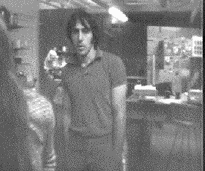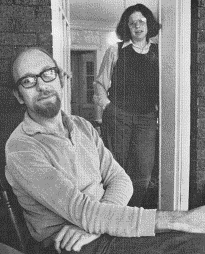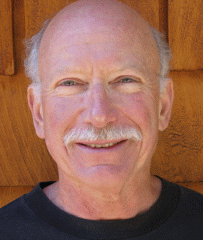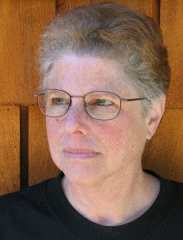|
Click
to read
the manuscript of what |
||
| -- Kaye Miller, Behavioral Sciences Bldg. U of I, 996-5284; working with students and graduate students in his political science classes on community projects such as programs with several Chicago street "gangs" like the Young Patriots and Young Lords; currently working on tapes of documentation -examination-feedback with Indians in Vancouver; I don't know how many porta-paks in his control, but there's also access to the schools equipment generally, including z -to 1 inch editing; putting out an issue of Radical Software which will examine standards for tapes. (from http://www.vasulka.org/archive/LyndaTWO/DumpPlacevol2.rtf) | ||
|
|
||
|
Hyde Parker - Dec.- Jan. 1973
Kaye Miller, Instructor in Political Science at Circle, approaches
video more analytically than anyone else I've met. Perhaps that's because
his field concerns itself more with messages than with the media in which
they're presented. In the mid-60's, Kaye experimented with film as a graduate student at
Berkeley. In 1968, at Circle, he and sociologist Gerry Swatez developed a
project that indulged their interests both in film and in research - a
film study of the '68 Democratic Convention. Proposing to "preserve
the concrete," they received funding and a considerable amount of
technical assistance from Circle. Taking two years to complete, the film
won prizes at the Venice and Chicago Film Festivals and the Edinburgh
Festival. With their first film as a sales point, Kaye and Gerry began seeking
funding for new film research. None was available. But, having completed
construction on several buildings in 1970, the University did have funds
for equipping the buildings. While film stock was an "expendable
supply" and processing an expense, tape equipment and reusable tape could be coded
as equipment. That budgeting peculiarity turned them into tapemakers. Showing their Convention film at meetings of various professional
associations, they had become intrigued by that kind of convention and
puzzled by its appeal. So they taped the 1971 Convention of the American
Political Science Association in Chicago. In the process of shooting 150
hours of tape for a one-hour product, they learned a great deal about
tape. During the 1971-1972 academic year, Kaye began experimenting with the
"consciousness raising" potential of tape with five community
organizations (particularly the Young Patriots Health Clinic in Uptown).
He taught these organizations to look at the reality of their communities
with tape. At the end of the academic year, with this work incomplete, the
state budget was cut and his funding collapsed. In drafting the budget, no
contingency plans had been considered for projects in progress. Kaye is now devising projects with his most recent tape collaborator,
Roberta Kass, a former political and union organizer. They want to
discover "how one can use a medium that represents surfaces to get at
the insides of things. We want to develop," says Kaye, "modes of
making film and tape that speak adequately for the world they represent.
The problem is to make them speak for both the surface and the
inside." Their most provocative idea, which is now just an idea, is a
project that will "get inside" the world of children. They're
searching for the best ways of using the language of tape. Their concern
for more effective use of the medium has led Kaye and Roberta to edit this
month's issue of Radical Software, a national magazine devoted to
alternative video technology. In it, they've initiated the arduous process
of developing a language of criticism appropriate to tape by reviewing
past issues of the magazine itself and tapes by major tapemakers. The idea of a critical issue provoked strong negative reactions.
Several influential tapemakers refused to submit But Kaye and Roberta believe criteria for evaluating tape are necessary. As a tapemaker, Kaye says "you need to make and you need to criticize. It's through the critical process that you begin to discover the possibilities of the medium, its characteristics, and what can and cannot be done." Roberta supports this thesis in her introductory article, and sounds a warning: "To keep silent about serious things will allow the conventional and corrupt forces of public opinion, the state, and business to swoop up the meanings and definitions. . . The new experiences we have had are much too precious to subject to the twisted meanings of the old culture which wildly attempts to absorb anything which even vaguely threatens change." |
||
|
Dear Ed,
Other projects in 1972 included (1) a series of tapes on poverty
under
subcontract to the School of Social Welfare at the University of
Chicago; (2) the use of half-inch video to assist a colleague of mine,
who was also a Chicago alderman (councillor), to tape town hall meetings
in an attempt to open up the political process in Chicago; (3),
the
recording of brain surgery on a monkey, as part of a process of ensuring
that ethical standards were adhered to in the treatment of laboratory
animals. (4) In the summer of 1972, we worked with a fledgling
community video action group in North Vancouver, British Columbia, that
was trying to apply locally some of the ideas that had been worked out
by the Challenge for Change programme of the National Film Board of
Canada. In these settings, we were sometimes concerned only with the
process, but in others the finished tape artifact was central. For
example, the poverty tapes eventually made their way to the U.S.
Department of Health, Education and Welfare. Re-reading the text of this issue after 32 years has
been a remarkable experience. The old expression, "The more
things change, the more they stay the same" seems so appropriate
here. Now, in 2005, we have the Internet, with the utter ubiquity of
images and instantaneity of distribution-- things, in 1973, we could only
imagine might happen "one day."
|
||
|
Click
to read
the manuscript of what |
||
| If the label on it is correct-- and I believe it to be so-- I shot it in November of 1971, in New York, in an apartment on Central Park West. Several of us from the University of Illinois were in New York for a symposium titled "Challenge for Change Comes to NYU." Challenge for Change was a programme of the National Film Board of Canada and was responsible for some of the most imaginative, progressive efforts to promote social change using film and videotape that had been done up until that time. One of the key people in media at NYU was a woman named Jackie Park, who had worked for the National Film Board before she came to New York. The apartment in question belonged to her and her husband, Ben. The key guest for, I think, brunch on this particular day was a childhood friend of Jackie's, and a professor with whom both Roberta and I had studied-- Roberta at the University of Pennsylvania, and I at Berkeley. He was Erving Goffman, one of the great sociologists of the period. He was interested in research applications for visual media, and also eager to see his old friend, with whom he had been out of touch for perhaps 35 years. I haven't seen the tape for many years, and cannot remember what all occurs on it, but I would love to see it again, if you're able to render it to either DVD or VHS. I can only hope that it has not suffered magnetic degradation over time. WATCH THE MOVIE! c- 2005
|
||
 |
 |
|
| The stills of Michael Shamberg can be around at the 23 minute mark aprox. | ||
|
See some of Kaye & Roberta Miller's Wood Creations at: CIRCLE
CRAFT
|
||




